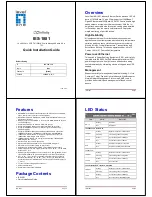
64
FSN Series • User’s Guide
3. Control Panel Orientation
Control Panel Descriptions
2) Program
Bus
The
Program
Bus
(PGM) is the bank’s bottom layer, which is used to select the
switcher’s primary output video. Please note:
~
Except for
SHIFT
, all buttons on the
PGM Bus
are mutually exclusive,
including the re-entry button.
3) Preset and Phantom Key Bus
This bus has two functions:
~
First (just like on an M/E), the
PST
Bus
is used to select the next
background source.
~
Second, because there is no “physical”
Key Bus
in the
PGM Bank
, the
PST Bus
doubles as the
Key Assign Bus
— the bank’s top layer. To
assign a key source to the downstream keyer, press and hold the
DSK
button, then select the desired key source from the buttons on
PST
.
Please note:
~
Except for
SHIFT
, all buttons on the
PST Bus
are mutually exclusive,
including the re-entry button.
~
When a
PST
source is taken to Program with a transition, the source
“flips” to
PGM
. In Chapter 7, refer to the “
” section on page 269 for details.
4) Re-entry
Buttons
At the end of each bus, the
Re-entry Button
allows you to combine the program
output of the M/E into the video flow of the selected bus. For example:
S
You can re-enter M/E 1 on
PGM
,
PST
or the
Phantom Key Bus
.
This re-entry capability enables you to cut, mix or wipe to an M/E, or use an M/E
as a key source.
5) SHIFT
Buttons
All
SHIFT
buttons are latching. Press to access additional sources as follows:
~
Sources 11 through 20 on the FSN-150.
In Chapter 7, refer to the “
” section on page 268 for a
discussion of video layers within the switcher.
















































